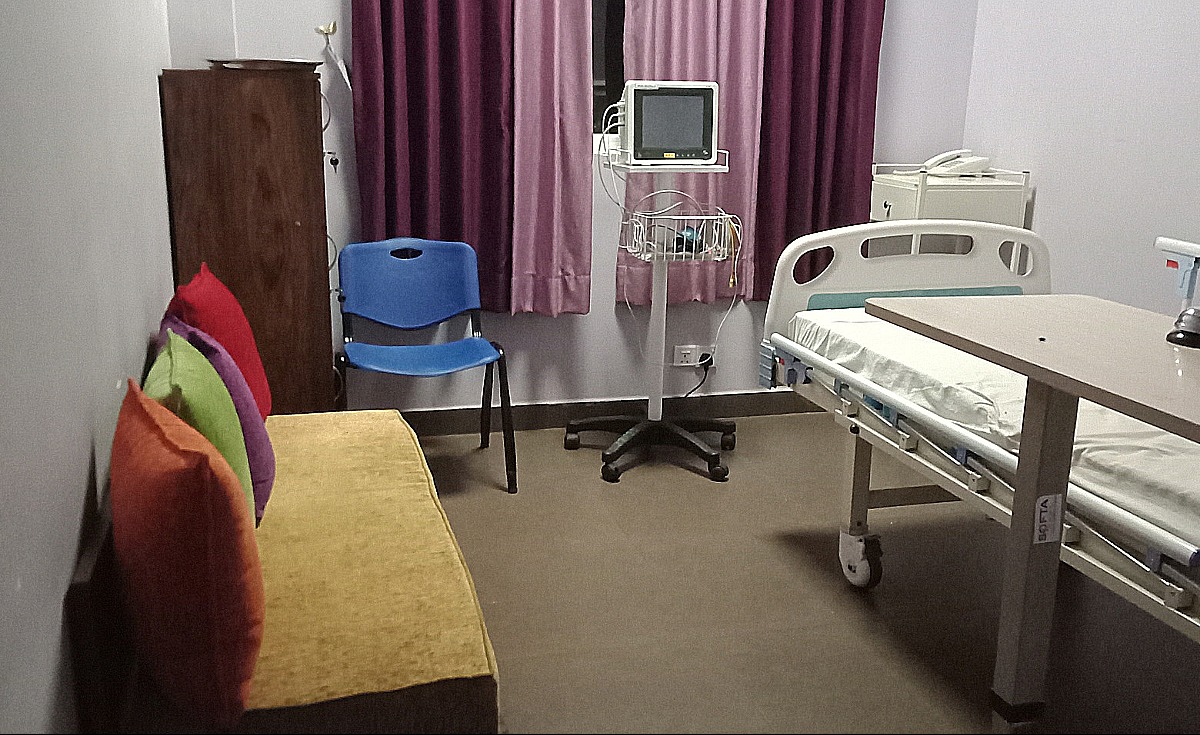
Key Info on Paying Wards in State-Funded Hospitals in Sri Lanka
While paying wards in state-funded hospitals might be unfamiliar to some, it’s not entirely new. This concept has been in practice at Colombo National and Sri Jayewardenepura Hospitals for quite some time, offering services at a much lower cost compared to private hospitals. Recently, in January, I spent a week in the paying ward at Nuwara Eliya District General Hospital with my mother who needed some tests done. If you’ve never been in a paying ward in a state-funded hospital before and are curious about the costs, admission process, and benefits, this blog post will provide the key information you need. Please be aware that these factors may slightly differ between hospitals across the island. If you have health insurance, it’s advisable to consult with your insurance agent before being admitted. [Pic: Room #2 of the paying ward in Nuwara Eliya District General Hospital]
Fees for receiving treatments in a Paying Ward
The room charges in the private ward at Nuwara Eliya District General Hospital are 1,875.00 per day. Remember, when you receive treatments in the paying ward you have to pay for the meds, the tests, and food. Not just the private room. You have to make a cash deposit of 10,500.00 upon admission and renew the deposit once every 3 days meaning you have to pay 10,500.00 once every 3 days. The hospital will issue a cheque at the point of discharge for any funds that were not utilized during your stay. My mother stayed in the hospital for one week and the total charges were 33572.24 [LKR]
The procedure for admission to a Paying Ward
To admit a patient to a paying ward, you follow a process similar to that of a normal ward. The key difference is that you need to obtain a letter from your consulting physician authorizing admission to the paying ward. The patient is first registered, and then you present this letter to the medical staff in charge of the paying ward along with proof of the initial deposit of 10,500/-. In my mother’s case, the consulting physician had issued a letter for admission to the normal ward. However, the medical staff at Nuwara Eliya District General Hospital swiftly resolved the issue over the phone and admitted her to room number 2 in the paying ward.
The benefits of being treated in a Paying Ward
The main advantages of receiving treatment in a paying ward are privacy and comfort. The meals served in these wards are of much higher quality compared to those in other wards, as they are carefully screened and sampled for quality assurance. Additionally, the restrooms are kept exceptionally clean. Unlike in normal wards, anyone, regardless of gender, can stay with the patient. There are no restrictions on visitation hours, and no passes are required for entry; you can come and go as you please. Furthermore, there are no limitations on using the elevator. One of the greatest benefits I experienced was that my mother received uninterrupted medical care and attention, even during a union strike.
Wrap Up
When the Wickramasinghe administration officially approved the establishment of paying wards in state-funded hospitals, the World Socialist Website criticized it as another step toward dismantling free public healthcare, which is relied upon by the vast majority of Sri Lankan workers and the poor. However, I fail to see how this initiative threatens free public healthcare. Instead, it allows capable patients to access the benefits of paid healthcare facilities at a reasonable cost. The income generated from these paying wards is used to cover the expenses of free healthcare services, making it a win-win situation for both the state and Sri Lankan citizens. Unfortunately, many clueless Sri Lankans tend to make mountains out of molehills. Thankfully, the government stuck to the plan and proceeded with establishing these paying wards in state-funded hospitals.
If you found this content helpful, I kindly ask you to leave your feedback in the comments section below. Sharing it on social media would also be greatly appreciated. In order to promote meaningful and respectful dialogue, I request that you use your full name when commenting. Please note that any comments containing profanity, name-calling, or a disrespectful tone will be deleted. Thank you for your understanding and participation.




